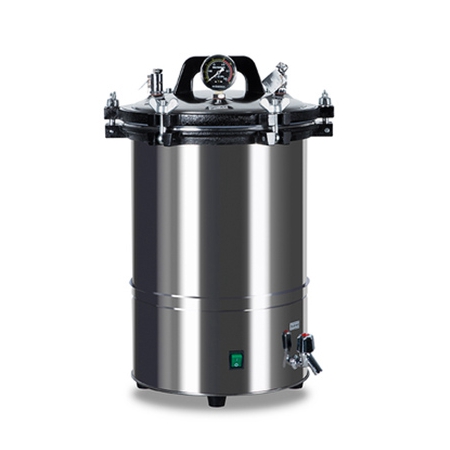The terms “autoclave” and “sterilizer” are often used interchangeably, but they do have distinct definitions and characteristics. Understanding the difference between the two can help in selecting the appropriate equipment for specific sterilization needs.
Definition and Operating Principle
An autoclave is a pressure chamber used for the sterilization of objects by exposing them to high-pressure saturated steam at an elevated temperature. The high pressure helps to ensure that steam penetrates all areas of the load, effectively killing microorganisms. Autoclaves are commonly used in medical, dental, and research settings for the sterilization of instruments, equipment, and supplies.
A sterilizer, on the other hand, is a broader term that refers to any device or process used to eliminate or remove microorganisms from an object or surface, rendering it sterile. Sterilizers can utilize various methods to achieve sterilization, including heat (such as steam or dry heat), chemicals, radiation (such as gamma radiation or UV light), and high-pressure steam (as in an autoclave).

Key Differences
-
Method of Sterilization:
- Autoclaves specifically use high-pressure steam to sterilize objects. The combination of high temperature and pressure ensures that steam penetrates deeply into the load, effectively killing all microorganisms.
- Sterilizers, however, can use a variety of methods to achieve sterilization. This includes not only steam but also chemicals, radiation, and other methods.
-
Equipment Design:
- Autoclaves are typically designed as pressure chambers with a heating element to generate steam. They have controls for setting temperature, pressure, and sterilization time.
- Sterilizers can vary widely in design, depending on the method of sterilization used. Some may be as simple as a spray bottle filled with a chemical disinfectant, while others may be complex machines utilizing high-energy radiation or advanced heating technologies.
-
Application and Use:
- Autoclaves are commonly used in medical, dental, and research settings for the sterilization of instruments, equipment, and supplies. They are particularly effective for sterilizing wrapped items and those with complex shapes or difficult-to-reach areas.
- Sterilizers are used in a wider range of applications, including food processing, pharmaceutical manufacturing, and laboratory research. They may be more suitable for sterilizing surfaces, liquids, or objects that cannot be easily placed in an autoclave.
-
Regulatory and Compliance Considerations:
- Autoclaves are typically subject to rigorous regulatory standards, particularly in medical and dental settings. They must be validated and monitored regularly to ensure their effectiveness.
- Sterilizers, depending on the method of sterilization used, may also be subject to regulatory standards. However, the specific requirements may vary depending on the application and industry.
Conclusion
In summary, while autoclaves and sterilizers both serve the purpose of eliminating microorganisms from objects or surfaces, they have distinct differences in terms of method of sterilization, equipment design, application and use, and regulatory and compliance considerations. Understanding these differences can help in selecting the appropriate equipment for specific sterilization needs, ensuring the safety and effectiveness of the sterilization process.
 Top Lab Equip
Top Lab Equip
